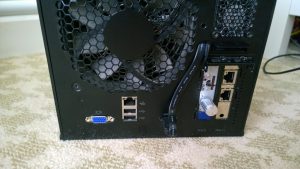Even now – after all this time – passwords are hard.
Yes, I know we should all be using Cloud with its fancy KeyStore/Key Vaults or enterprise store such as CyberArk. We all know we should not be chosing them. However, like it or not ‘things’ still need passwords. Whether its for an encryption key, wireless network or just a plain and simple password.
Vendors are also part of the problem, placing restrictions on types of characters or even positioning of them within a password. Still. In 2020! (VMware and Cisco are pretty horrific at this)
Also when you are building stuff in automation, its inevitable you will need some sort of password generating. I use PowerShell a lot and found methods that could be used to do this.
Voila my new GitHub project https://github.com/kevsterd/PoSH-Passwords
This is based on using the Psuedo Random Number Generator (PRNG) which is a feature provided by the Windows Cryptographic Service Provider (CSP) which generates randomness in a ‘good enough’ manner. If you need more than this then well you know why and what to do about it but for most uses this is pretty good.
It uses vendor safe methods and arrangments out of the box with a pretty good 16 character length. You can append flags to make it stronger, output a number of them or make them readable. Its up to you. Your choice.
# Import the module
PS > import-module .\Password-Functions.psm1
# Run the function
PS > New-Password
LC*ATg2F0CFmh-r4Want longer length ? Want more than one ?
PS > New-Password -Length 20 -count 3
uVelF$qejS4B.J$I8hmO
I9h+Wx1fJeUw8OxWf@DA
QbvykhouQ@tHe1IuQDPERemember, the passwords being returned back as an object you can then store into other variables.
PS > $pass=New-PasswordYou can obviously use the PowerShell SecureString method to store and manipulate if need be. (Some decent tips at http://blog.majcica.com/2015/11/17/powershell-tips-and-tricks-decoding-securestring/)
PS > $pass=New-Password
PS > $secpass=(ConvertTo-SecureString $pass -AsPlainText -Force)
PS > $secpass
System.Security.SecureString
PS > $secpass | ConvertFrom-SecureString
01000000d08c9ddf0115d1118c7a00c04fc297eb010000002571feb3508bb14b8eaa7cac1828a6b80000000002000000000010660000000100002000000064fc1cf1a0b044b4a1dd63aa3fc9ba9ec4f83b24a70569cbbe25773522868bd4000000000e80000000020000200000004487a5581bbc0d7ffcb47bdfda87198014a8cce89b9ed117b1c29893e9d3481b3000000058b14398fa542e694ce5b9a37299b147f5c9640e33f4c6603b7a2131c79c23d22301870794d266ea52b5194ebdb1326a40000000db1dec8a79db34f89846c015fb6a37f4116cb15c48ccd9dcecbd8dfc16a3a1209207be1a9e53e1b37870cdf04c693ff9a41f100d5197d42d7326e4680c6941b9
PS > $secpass | ConvertFrom-SecureString | Out-File ".\MyPassword.txt" Not wanting to install the OS on the 4TB drives, I decided to make use of a spare SSD. This was then connected to the motherboard SATA port.
Not wanting to install the OS on the 4TB drives, I decided to make use of a spare SSD. This was then connected to the motherboard SATA port.
 Finally had notification that I now am offically CISSP certified !
Finally had notification that I now am offically CISSP certified !
Recent Comments